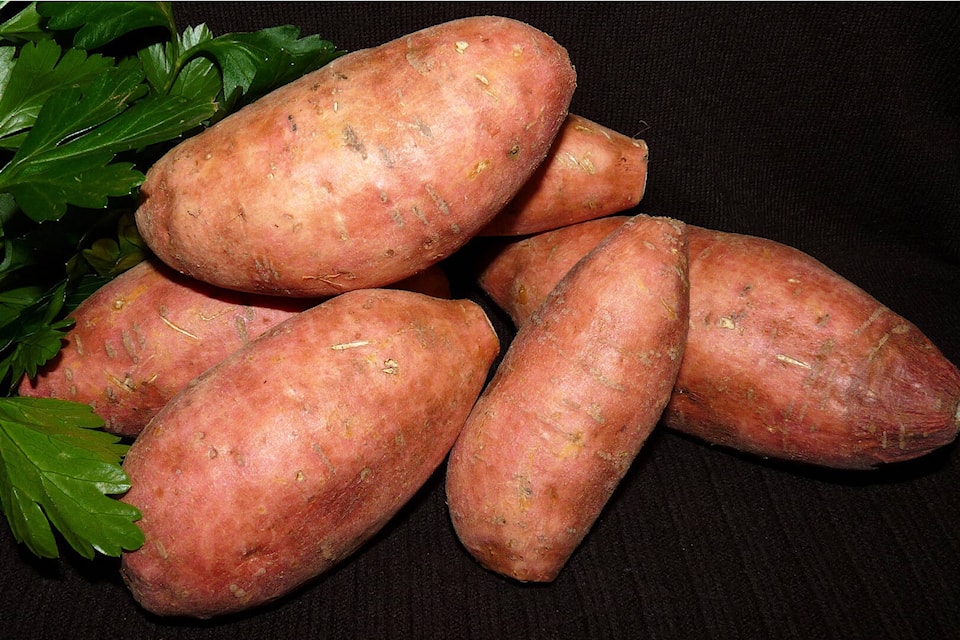A Gardener’s Diary
Jocelyne Sewell
Sweet potatoes and yams are not the same. Both the yam and the sweet potato do grow underground and have yellowish-orange flesh, but there the similarity ends; they are not the same plant species.
Yams can reach two to three feet long and some can weigh as much as 80 lbs (36 kg). Real yams have rough, brown, scaly skin and white flesh that is dry and starchy; however, when cooked properly, yams have a mild, earthy flavor with a subtle sweetness.
Sweet potatoes are edible “roots” and are from the morning glory family. They are native to the Americas, growing best in both tropical and warm temperate regions. The sweet potato has long been a favourite crop in the United States, especially in the Southeast. Over 50 per cent of the country’s sweet potatoes are grown in North Carolina.
In terms of size, sweet potatoes are generally about five inches long and weigh 4.5 ounces; they always taper at the end and have thin skin. Sweet potatoes store in the pantry for about two to three weeks; never put them in the refrigerator, as they’ll get hard and develop an unpleasant taste. Sweet potato varieties come in different colours (orange, white, yellow, or purple) and have a naturally sweet, creamy, moist texture. Often, it’s served as a colourful side dish, especially around Thanksgiving.
The orange sweet potato was cultivated in the 1930s and it was larger, sweeter, more moist, and fleshier compared to the smaller, yellowish, and drier-fleshed varieties. A superior sweet potato! To differentiate the orange sweet potato from the white and yellow ones, it was called a “yam” because it looked similar to the African vegetable.
Today, the name “yam” has stuck as an interchangeable term for orange sweet potatoes in America. Whether you do find white, orange, yellow, or even purple sweet potatoes, they are all interchangeable in cooking, but bring different tastes, textures, and colours to your plate.
Sweet potatoes as the number one most nutritional vegetable, with more nutrients than even spinach or broccoli! Benefits of the sweet potato include high levels of Vitamins A and C, iron, potassium, and dietary fiber.
They also contain protein, calcium and sodium, Especially important is the high percentage of beta-carotene found in sweet potatoes. This is converted into Vitamin A, which has the ability to reduce the risk of certain cancers.
Sweet potatoes because they have almost no fat make them great for those watching their weight. With their low carbohydrate content and high fiber content, sweet potatoes keep you full for longer and give you all the essential nutrients.
For more information: 250-558-4556 jocelynesewell@gmail.com
@VernonNews
newsroom@vernonmorningstar.com
Like us on Facebook and follow us on Twitter.
